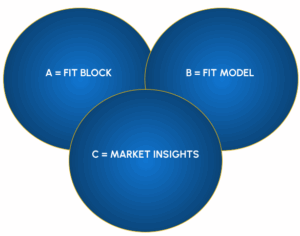Saturday, October 25, 2025
Yes, size still matters.
(hee hee, cue the teenage giggles)
It’s no shocker that sizing and fit drive a huge share of apparel returns. Coresight Research puts it at over half. The bill is brutal: shipping, inspection, restocking, markdowns, and scrapping what cannot be resold.
In some models, up to two-thirds of a product’s price ends up covering returns. Returns crush profit and, in extreme cases, dent loyalty as customers switch brands after poor fit.
Think of it this way: sizing is a moving target.
Bodies and preferences evolve. GLP-1 use is one clear and obvious driver. However, that factor does not operate in isolation. Regional style and body trends make the target move in another direction. Consider that The Wall Street Journal recently showed how plastic surgery procedures vary by region, which means a size profile in Los Angeles can differ from Miami.
Meanwhile, brands stay relatively static. Outdated fit blocks persist. Feedback from stores and digital channels rarely flows back into product creation. Even when it does, it is often ignored.
At the brand level, the common failures are straightforward:
- Fit blocks do not evolve if/when customers complain.
- Fit models remain the same season after season.
- Feedback loops break, so returns data never reaches technical design.
- Market sizing insights are not treated as an input.
Brands love to say they are customer-centric. Few have the processes to prove it. The customer will always be more dynamic than the brand. The best a brand can do is keep pace.
With that in mind, here’s a size and fit Venn diagram for you to consider:

Now let’s work through the combinations and see why the trio of fit blocks, fit models, and insights is essential.
- A + B (no C): Sizes stagnate; recurring feedback (e.g., “bottoms are too long”) never informs future runs.
- A + C (no B): You cannot judge drape or on-body fit; 3D fitting helps only if the full product-creation workflow is digital. This a textbook example of where high tech needs to be balanced high touch.
- B + C (no A): No standard block; factories rebuild patterns for every silhouette, raising cost and producing inconsistent sizing across styles.
You might say technology (let me guess, AI?) will fix sizing.
It can and will if the product-development process and feedback loops are in place. Without them, tech is just extra fabric on a shirt that’s too big for me but the tag says its medium: Wasteful.
In short, sizing isn’t a design issue. It’s a process issue.
Get the process right, and you end up handling returns in the best way possible.
By preventing them.
About Retail Strategy Group
Founded in 2020, Retail Strategy Group works with market-leading brands to help them improve profitability and increase organizational effectiveness. The firm produces a weekly newsletter, The Merchant Life, where retail executives find the best retail insights and new, provocative ideas. For more information, visit www.retailstrategygroup.com.